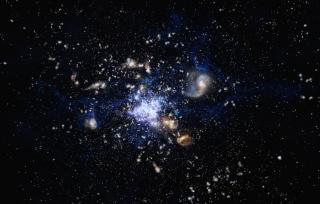Bibcode
Wang, Jia-Wei; Koch, Patrick M.; Clarke, Seamus D.; Fuller, Gary; Peretto, Nicolas; Tang, Ya-Wen; Yen, Hsi-Wei; Lai, Shih-Ping; Ohashi, Nagayoshi; Arzoumanian, Doris; Johnstone, Doug; Furuya, Ray; Inutsuka, Shu-ichiro; Lee, Chang Won; Ward-Thompson, Derek; Le Gouellec, Valentin J. M.; Liu, Hong-Li; Fanciullo, Lapo; Hwang, Jihye; Pattle, Kate; Poidevin, Frédérick; Tahani, Mehrnoosh; Onaka, Takashi; Rawlings, Mark G.; Chung, Eun Jung; Liu, Junhao; Lyo, A. -Ran; Priestley, Felix; Hoang, Thiem; Tamura, Motohide; Berry, David; Bastien, Pierre; Ching, Tao-Chung; Coudé, Simon; Kwon, Woojin; Chen, Mike; Eswaraiah, Chakali; Soam, Archana; Hasegawa, Tetsuo; Qiu, Keping; Bourke, Tyler L.; Byun, Do-Young; Chen, Zhiwei; Chen, Huei-Ru Vivien; Chen, Wen Ping; Cho, Jungyeon; Choi, Minho; Choi, Yunhee; Choi, Youngwoo; Chrysostomou, Antonio; Dai, Sophia; Di Francesco, James; Diep, Pham Ngoc; Doi, Yasuo; Duan, Yan; Duan, Hao-Yuan; Eden, David; Fiege, Jason; Fissel, Laura M.; Franzmann, Erica; Friberg, Per; Friesen, Rachel; Gledhill, Tim; Graves, Sarah; Greaves, Jane; Griffin, Matt; Gu, Qilao; Han, Ilseung; Hayashi, Saeko; Houde, Martin; Inoue, Tsuyoshi; Iwasaki, Kazunari; Jeong, Il-Gyo; Könyves, Vera; Kang, Ji-hyun; Kang, Miju; Karoly, Janik; Kataoka, Akimasa; Kawabata, Koji; Khan, Zacariyya; Kim, Mi-Ryang; Kim, Kee-Tae; Kim, Kyoung Hee; Kim, Shinyoung; Kim, Jongsoo; Kim, Hyosung; Kim, Gwanjeong; Kirchschlager, Florian; Kirk, Jason; Kobayashi, Masato I. N.; Kusune, Takayoshi; Kwon, Jungmi; Lacaille, Kevin; Law, Chi-Yan; Lee, Sang-Sung; Lee, Hyeseung; Lee, Jeong-Eun; Lee, Chin-Fei; Li, Dalei; Li, Hua-bai et al.
Referencia bibliográfica
The Astrophysical Journal
Fecha de publicación:
2
2024
Revista
Número de citas
9
Número de citas referidas
6
Descripción
We report 850 μm continuum polarization observations toward the filamentary high-mass star-forming region NGC 2264, taken as part of the B-fields In STar forming Regions Observations large program on the James Clerk Maxwell Telescope. These data reveal a well-structured nonuniform magnetic field in the NGC 2264C and 2264D regions with a prevailing orientation around 30° from north to east. Field strength estimates and a virial analysis of the major clumps indicate that NGC 2264C is globally dominated by gravity, while in 2264D, magnetic, gravitational, and kinetic energies are roughly balanced. We present an analysis scheme that utilizes the locally resolved magnetic field structures, together with the locally measured gravitational vector field and the extracted filamentary network. From this, we infer statistical trends showing that this network consists of two main groups of filaments oriented approximately perpendicular to one another. Additionally, gravity shows one dominating converging direction that is roughly perpendicular to one of the filament orientations, which is suggestive of mass accretion along this direction. Beyond these statistical trends, we identify two types of filaments. The type I filament is perpendicular to the magnetic field with local gravity transitioning from parallel to perpendicular to the magnetic field from the outside to the filament ridge. The type II filament is parallel to the magnetic field and local gravity. We interpret these two types of filaments as originating from the competition between radial collapsing, driven by filament self-gravity, and longitudinal collapsing, driven by the region's global gravity.
Proyectos relacionados

Gas Molecular y Polvo en Galacias através del Tiempo Cósmico
Dos cuestiones fundamentales en la Astrofísica son la conversión de gas molecuar en estrellas y cómo este proceso físico depende del entorno en todas las escalas, desde sistemas planetarios, cúmulos estelares, galaxias hasta cúmulos de galaxias. El objectivo principal de este proyecto es el de estudiar la formación y evolución de galaxias a partir
Helmut
Dannerbauer